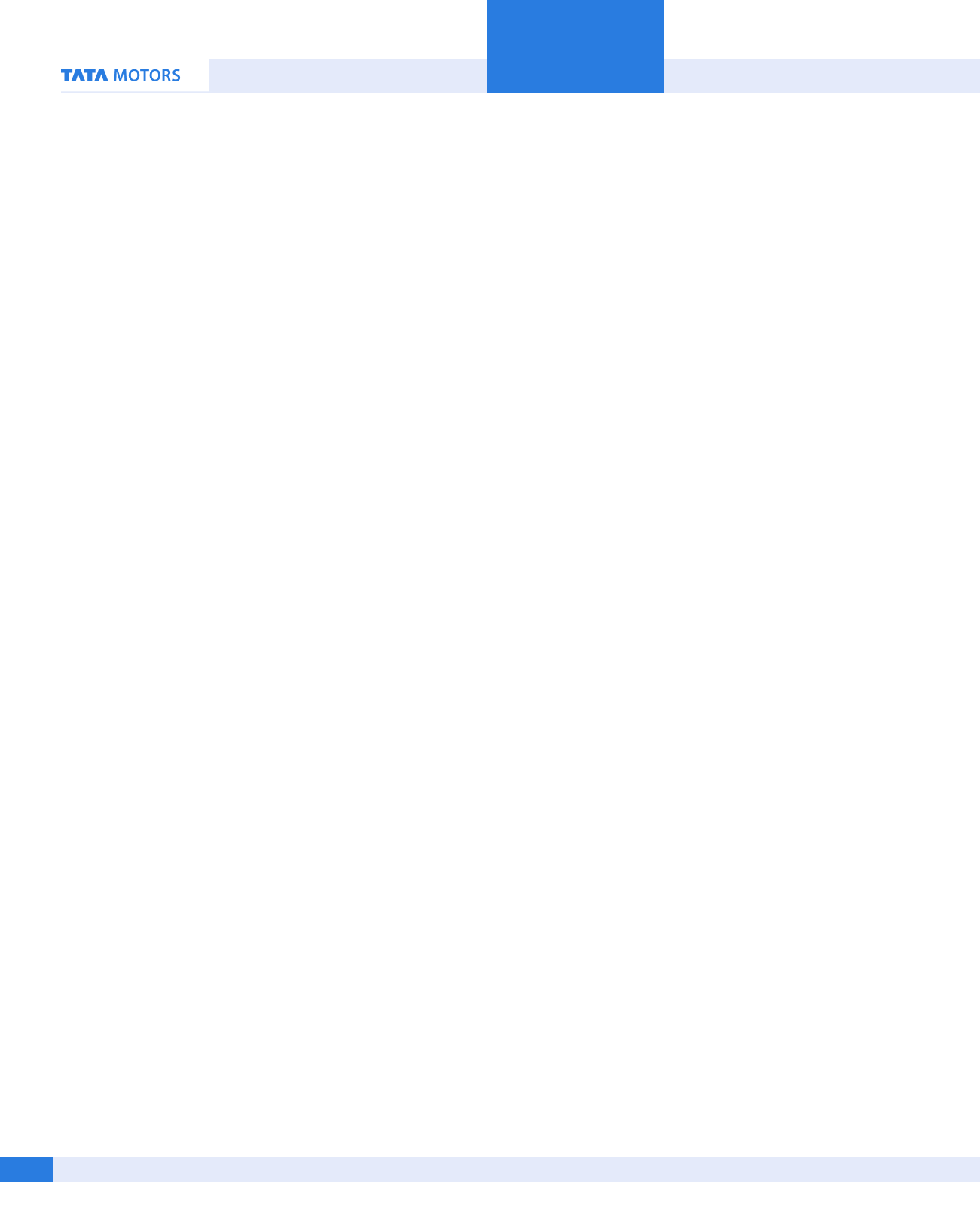

Corporate Overview
Financial Statements
Statutory Reports
166
72nd Annual Report 2016-17
Other expenses (net of income) increased by 9.9% to GB£4,997
million in Fiscal 2017 compared to GB£4,546 million in Fiscal 2016
primarily reflecting higher costs related to freight and distribution,
warranty, selling and fixed marketing expense and launch costs.
In Fiscal 2017 there was an accounting policy change to reclassify
gains and losses on revenue and cost hedges from “Other Expense”
to “Revenue” and “Material and Other Cost” respectively which the
Company believe more appropriately reflects the intent of these
hedges. This change is also reflected in the financial statements of
the prior year.
Product development costs capitalized increased by 14.8% to
GB£1,426 million in Fiscal 2017 compared to GB£1,242 million in
Fiscal 2016 due primarily to expenditure on the development of
future products and technologies.
EBITDA was GB£2,955 million (12.1% margin) in Fiscal 2017, down
6.1% compared to the EBITDA of GB£3,147 million (14.1% margin)
in Fiscal 2016 due to the factors described above.
EBIT was GB£1,458 million (6.0% margin) in Fiscal 2017, down 18.7%
compared to the EBIT of GB£1,793 million (8.0% margin) in Fiscal
2016 due to the lower EBITDA as well as an increase in depreciation
and amortization, partially offset by higher profits from company’s
China joint venture.
Profit before tax (“PBT”) increased by 3.4% to GB£1,610 million in
Fiscal 2017 compared to GB£1,557 million in Fiscal 2016, reflecting
the lower EBIT and more unfavourable revaluation of unrealized
foreign currency debt and hedges, offset by lower net finance
expense, favourable revaluation of commodity hedges and GB£151
million of further insurance and other recoveries related to Tianjin
(compared to the GB£157 million net charge incurred in Fiscal 2016).
Profit after tax (“PAT”) decreased by 3.0% to GB£1,272 million in
Fiscal 2017 compared to GB£1,312 million in Fiscal 2016. However,
the effective tax rate of 21.0% in Fiscal 2017 was higher than the
15.7% in Fiscal 2016 primarily reflecting the non-recurrence of
favourable deferred tax credits in Fiscal 2016 (£74 million related to
UK Patent Box legislation).
Net cash generated from operating activities was GB£3,160
million in Fiscal 2017 compared to GB£3,556 million in Fiscal 2017
driven by solid profitability, positive working capital and non-
cash accruals of GB£467 million (positive working capital and
non-cash accruals of GB£547 million in Fiscal 2016) and a GB£68
million dividend received from the China joint venture partially
offset by GB£199 million of tax paid. After GB£3,070 million of
total investment spending (excluding GB£368 million of research
& development already expensed through the income statement)
and GB£110 million of other income (primarily interest received
and foreign exchange gains on deposits) free cash flow before
financing was GB£295 million. Increases in debt of GB£841 million
primarily reflects the approx. GB£857 million of bonds issued in
January 2017 and a GB£45 million increase in the utilization of
the invoice discounting facility offset by the redemption of the
remaining US$84 million (GB£57 million) 8.125% notes due 2021
and lease payments of GB£4 million. Finance expenses and fees,
primarily relating to interest payments on outstanding bonds
and fees relating to financing facilities were GB£150 million and
a dividend of GB£150 million was also paid to Tata Motors in
June 2016. As at March 31, 2017, Jaguar Land Rover had a total
cash balance of GB£5,487 million (comprised of GB£2,878 million
of cash and cash equivalents and GB£2,609 million of financial
deposits) compared to GB£4,651 million of total cash at March
31, 2016 (which comprised of GB£3,399 million of cash and cash
equivalents and GB£1,252 million of financial deposits). With total
cash of GB£5,487 million and an undrawn revolving credit facility of
GB£1,870 million, total liquidity available to Jaguar Land Rover was
GB£7,357 million at March 31, 2017, compared to GB£6,521 million
at March 31, 2016.
FINANCIAL PERFORMANCE OF TATA MOTORS FINANCE LTD
(AS PER INDIAN GAAP)
During Fiscal 2017, TMFL earned a total income of
R
2,721.25 crores
compared to
R
3,228.57 crores earned in Fiscal 2016, reflecting a
decrease of 15.7%. The expansion of spoke branches (Tier 2 and 3
towns) has helped in reaching out to the customer more quickly
and in improving customer satisfaction. The loss before tax was
R
698.56 crores in Fiscal 2017 as compared to a profit of
R
301.64
crores in Fiscal 2016. The loss after tax was
R
1,182.29 crores in Fiscal
2017, as compared to a profit of
R
267.03 crores in previous year.
FINANCIAL
PERFORMANCE
OF
TATA
DAEWOO
COMMERCIAL VEHICLES (AS PER KOREAN GAAP)
In Fiscal 2017, TDCV’s total revenue increased by 17.3% to
KRW1,031.77 billion (
R
5,986 crores) compared to KRW879.66 billion
(
R
5,096 crores) in Fiscal 2016, mainly due to lower export sales
partially offset by increase in domestic sales. The profit after tax
was KRW50.25 billion (
R
290 crores) compared to KRW45.56 billion
(
R
264 crores) of previous year. Better profitability of Euro 6 Vehicles,
better mix, favorable exchange realizations, continuous material
cost reduction, various cost control and inventory initiatives helped
in improving profits.


















